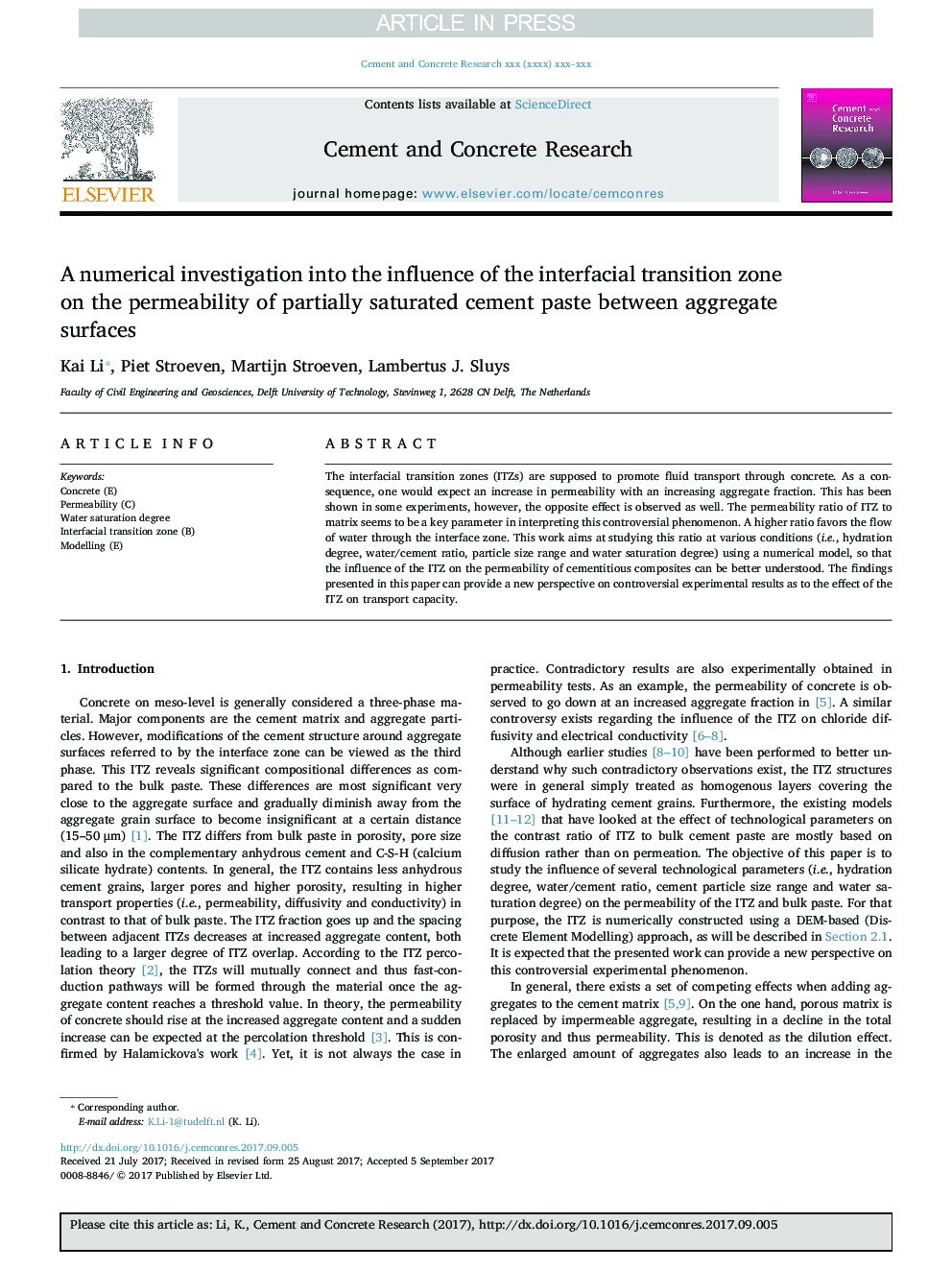| Article ID | Journal | Published Year | Pages | File Type |
|---|---|---|---|---|
| 7884960 | Cement and Concrete Research | 2017 | 10 Pages |
Abstract
The interfacial transition zones (ITZs) are supposed to promote fluid transport through concrete. As a consequence, one would expect an increase in permeability with an increasing aggregate fraction. This has been shown in some experiments, however, the opposite effect is observed as well. The permeability ratio of ITZ to matrix seems to be a key parameter in interpreting this controversial phenomenon. A higher ratio favors the flow of water through the interface zone. This work aims at studying this ratio at various conditions (i.e., hydration degree, water/cement ratio, particle size range and water saturation degree) using a numerical model, so that the influence of the ITZ on the permeability of cementitious composites can be better understood. The findings presented in this paper can provide a new perspective on controversial experimental results as to the effect of the ITZ on transport capacity.
Related Topics
Physical Sciences and Engineering
Engineering
Industrial and Manufacturing Engineering
Authors
Kai Li, Piet Stroeven, Martijn Stroeven, Lambertus J. Sluys,
